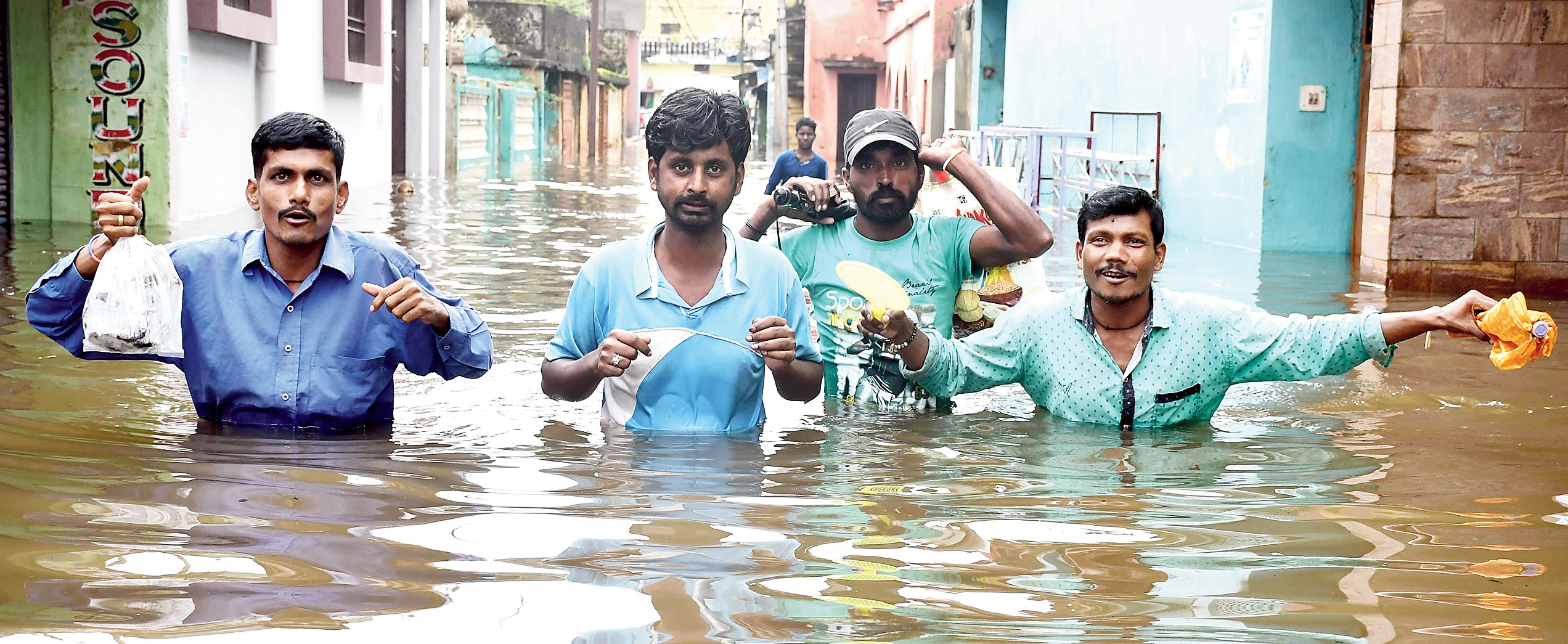Civic officials here tried their bit but could not prevent waterlogging in the city as cyclone Titli induced rain caused the drainage system to overflow and inundate vast areas, even submerging roads at most places.
Municipal commissioner Sarat Nayak said almost all the wards were reeling from waterlogging as the flow of water was much above the carrying capacity of the main surface water channels.
Nayak said: “What can be done when there is 137mm rain in less than 10 hours and de-watering pumps get defunct as they get submerged?”
As Cuttack was put in the “orange warning category with no cyclonic rain but very heavy rainfall warning”, the Cuttack Municipal Corporation’s preparedness was primarily to tackle water flooding in the city.
“Accordingly, de-watering pumps were positioned at 53 locations identified as most vulnerable to waterlogging. But the pumps in most of the locations were rendered useless as rain water submerged them,” Nayak said.
What evidently compounded the problem were obstructions created in the surface water channel as part of the ongoing rejuvenation and reconstruction under the Japan International Cooperation Agency (Jica) funded integrated sanitation project.
CMC’s executive Engineer (II) Bhagyadhar Sahoo said: “The obstructions had brought down the rainwater carrying capacity of the main storm water channels from 90mm to 30mm”.
Unofficial sources, however, said the rainwater carrying capacity of the main storm water channels had dropped to 12mm.
An eight-km long open channel forms the spine of the surface water drainage system, the branches of which extend to older parts of the city.
During heavy rainfall, it is possible to prevent inundation only if there is timely diversion of water into the Taladanda irrigation canal. This apart, diversion of water through main drain No. 2 into the Kathjodi river can help prevent inundation in the city’s eastern part.
CMC’s executive engineer (I) Manish Sarkar said: “All the sluice gates at Khannagar and Matrubhawan were kept open for release of rainwater to the Kathajodi and Taladanda canal, respectively. Even then, there has been massive waterlogging”.
“The water will take four to five hours to recede from the waterlogged areas if there was no further rain,” Sarkar said.










